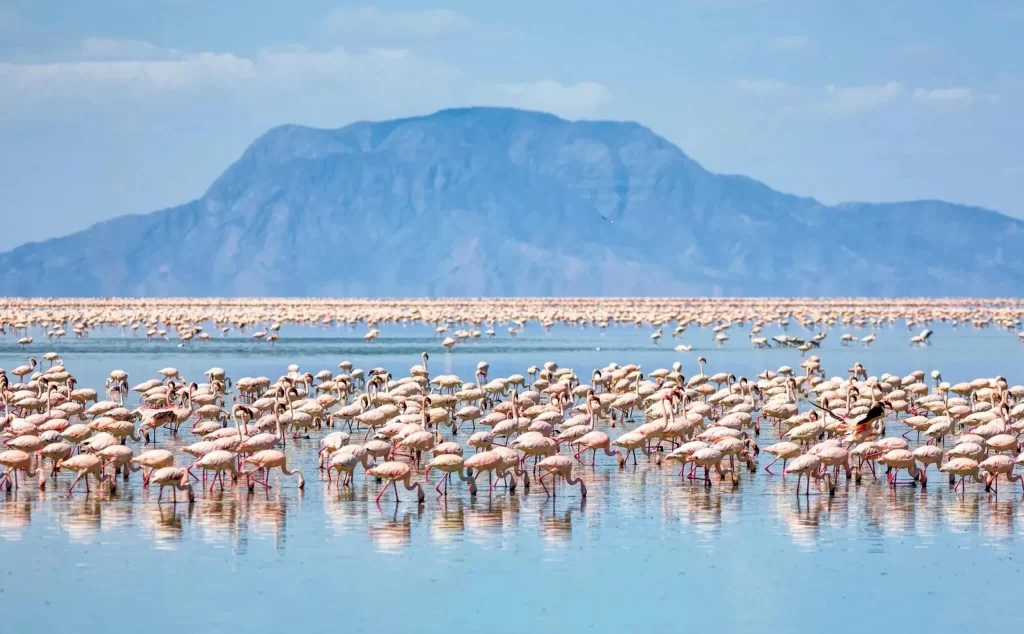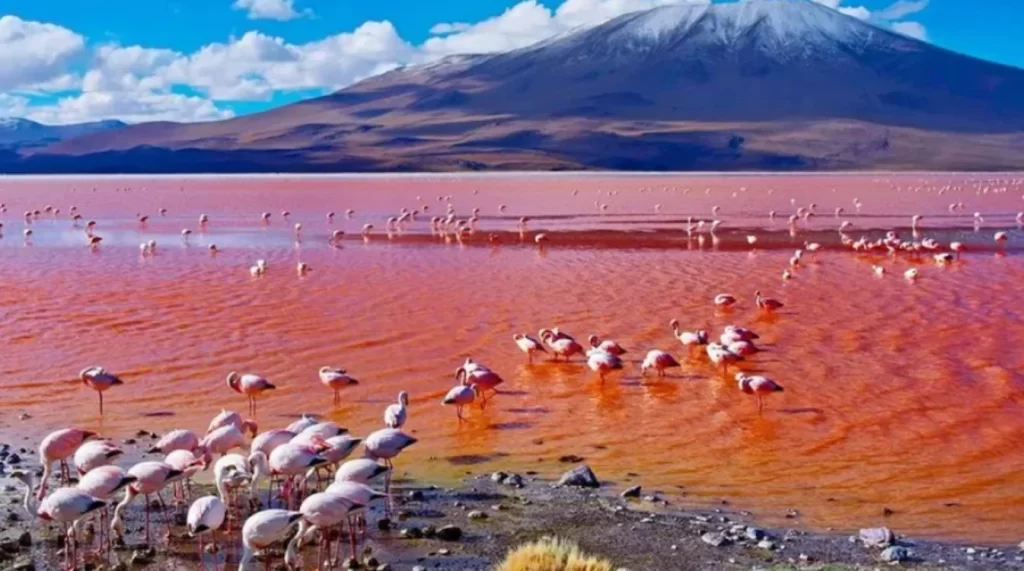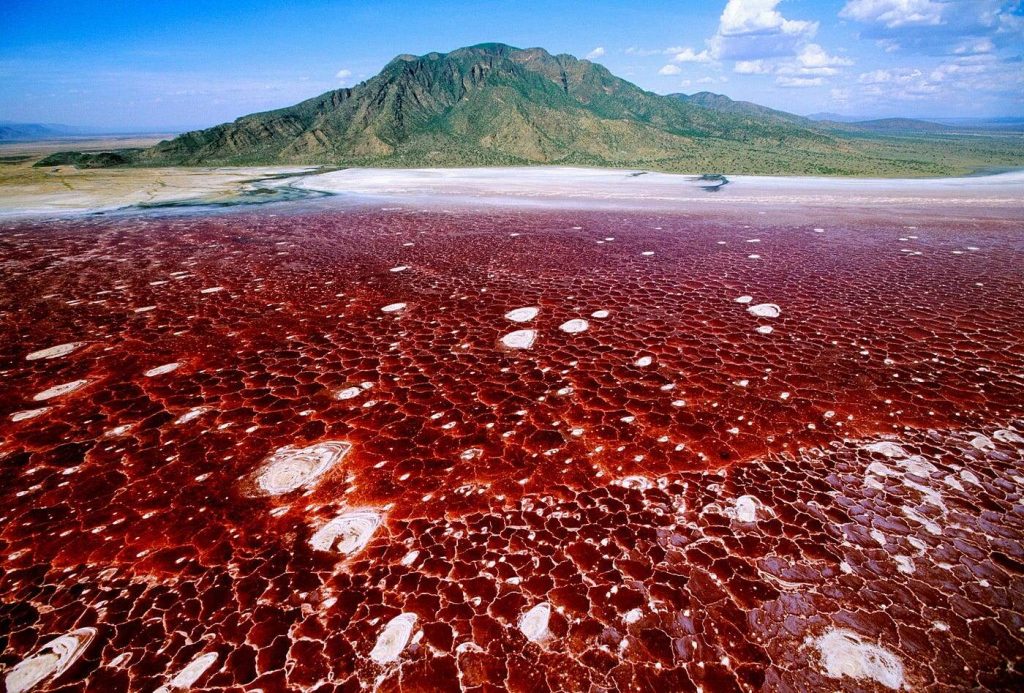In northeastern Tanzania lies a remarkably unique saltwater lake called Lake Natron. It is situated within the East African Rift system and was formed due to volcanic activity in the surrounding area. Being a basin, various salts such as sodium carbonate, calcium carbonate, and other minerals flow into the lake from the nearby mountains. However, the lake has no outlet other than evaporation, resulting in consistently high salt concentrations.

The water in the lake is not only salty but also highly alkaline, with a pH reaching up to 10.5, making it akin to a cleaning solution. The name Natron comes from a mixed salt used by ancient Egyptians for mummification, which contains sodium carbonate and sodium bicarbonate, similar to the lake’s composition. In addition to its corrosive nature, the water temperature can reach up to 60°C during the dry season, making it inhospitable for most life forms except for alkali-tolerant bacteria and lesser flamingos.

This harsh environment turns out to provide ideal conditions for the thriving of this flamingo species. If any creature dares to dip into the lake’s water, it risks burning its skin and eyes, let alone drinking from it. However, lesser flamingos (Phoeniconaias minor) have adapted remarkably well to this environment, to the point where it seems they could hardly live anywhere else but Lake Natron. Near their eyes, they have gland-like structures that excrete excess sodium carbonate, allowing them to drink the water without issue. Their slender legs are covered with tough scales that protect them from burns as they walk across the lake. Remarkably, during the dry season, “salt islands” form on the lake, providing safe nesting grounds where predators cannot reach them.
As a result, up to 75% of the world’s lesser flamingos are born at Lake Natron. Naturally, the flamingos could not survive here without their primary food source, which gives them their pink hue: cyanobacteria, also known as blue-green algae. This type of bacteria thrives in alkaline environments. During the dry season, when salt concentrations rise and the lake’s surface shrinks, cyanobacteria flourish, turning the water orange-red or even blood-red. In the rainy season, the water dilutes, becoming greenish or gray. Additionally, the lake contains salt-loving bacteria (haloarchaea), which also contribute to its orange hue.

Although few species can survive at the lake itself besides lesser flamingos, the surrounding marshes host a diverse range of wildlife, from pigeons, African fish eagles, bats, pelicans, ostriches, and buffalo to wildebeest, and more. When these animals die near the lake, their remains are preserved in a manner similar to Egyptian mummies. The carcasses harden and become calcified due to the high levels of calcium carbonate salts in the lake.

This lake has a depth ranging from half a meter to less than 3 meters. Depending on rainfall, evaporation, and the inflow from the river, it can expand to 22 km or shrink to 15 km. Currently, the Lake Natron area is not classified as a national park but is still under strict protection by Tanzania.